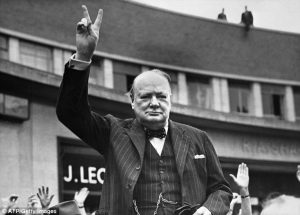From the British Empire to the Modern Commonwealth
Therefore, it could be seen that the map of red, of the British empire stretching around the world, was virtually ripped up in less than three decades and in its place a pink Commonwealth emerged. Overall, the emergence of the ‘New Commonwealth’ was a peaceful operation. In most cases the use of armed forces and violence was avoided, but there were a number of hitches. In Kenya “the excessive practice of the Mau Mau movement led Britain to doubt that political advanced there were moving in the correct direction; of course, the presence of a vocal group of white settlers did complicate the issue for the British government. In the long run, however, the use of force there was only a temporary diversion from the final achievement of a black union.”14 The communal situation in some territories was one of the most difficult problems. How to protect minority groups, such as the Asians in the three east African colonies, the Chinese in Malaya, the Indians in Fiji. “Many of the constitutional arrangements, both leading up to independence and in the constitution conferring independence, had to go through tortuous convolutions to try to protect and please the different communities. In both Malaya and Fiji the indigenes were determined to ensure that they retained a determining stake in the future of their countries.”15
What is the Commonwealth?
The Modern Commonwealth is the free association of sovereign states that had been members of the British Empire. “A loose, but in some ways powerful, association united by similar legal and political institutions, but bound by no constitution or rules of membership. The United Kingdom monarch is widely recognised by the member states as head, though it is not clear what this means. The monarch cannot be head of the Commonwealth, since that is a position that bears no legal sovereignty. Nor can (s)he be head of each state, since that is legally impossible, and formally rejected e.g. by India, which has declared itself a republic.”16
The most efficient way of co-operation between all members of the Modern Commonwealth is the practice of close consultation that has been devised. This machinery which makes consultation take place at all levels is smooth and effective. “In London the Commonwealth Relations Office is the main centre of consultation and information. As a mark of their more intimate relations Commonwealth countries exchange High- Commisioners instead of Ambassadors. Commonwealth consultation is so valuable because it is continuous. There is a non-stop exchange of telegrams, memoranda and visits upon all subjects of mutual interest so that members are probably better informed about each other than any other group of countries.”17
There are various levels of meetings, from small sub-committees to the Prime Minister’s Conferences which take place about once every eighteen months. Another important Commonwealth link is trade. About 20-25% of the total trade carried out in the world is Commonwealth trade. Defence is another matter of close Commonwealth liaison. “There are inter-Commonwealth staff meetings; co-ordination of training and planning; exchange of staff officers and training specialists; standardisation of equipment; joint co-operation as in the Woomera rocket-testing range in Australia or the Commonwealth strategic reserve of British, Australian and New Zealand troops stationed in Malaya; assistance in training, equipment and personnel has been extended to new members of the Commonwealth after independence.”18



